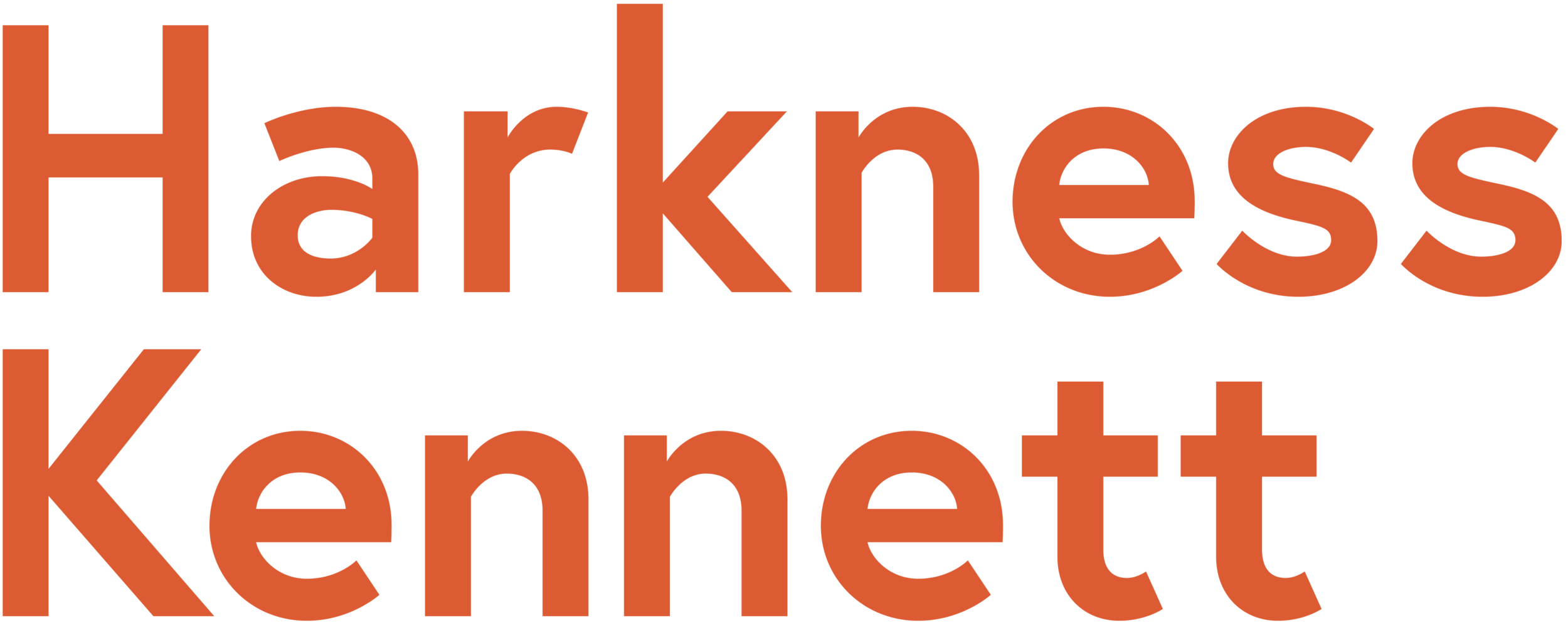AI in Internal Communications: What’s Coming – and Are You Ready?
AI in Internal Communications: What’s Coming – and Are You Ready?
On the wet and windy morning of Wednesday 19th November, we welcomed internal communicators, HR and business leaders to an in-person breakfast briefing in London to explore a topic that’s on everyone’s mind right now:
How is AI really changing internal communications – and what should we do about it?
We were lucky enough to be joined by Louise Wadman, Internal and Change Communications Consultant (and long-time friend of HK!) who shared with us insights from her latest research (in advance to it being published) into how AI is reshaping internal communication - and what that means for us as comms professionals.
Despite the miserable weather, the room was full and the conversation was lively. Over coffee and croissants, Louise shared early findings from her research and heard first-hand how teams are experimenting, where they feel stuck, and what support they need next.
Some of the early findings Louise shared in the session:
AI is everywhere… Except in IC
Louise started off the session by reminding us that business functions are already embracing IC. HR uses AI for recruitment and employee queries. Marketing leverages it for real-time analytics and hyper-personalised campaigns. Boards discuss AI as a strategic driver.
Yet IC often lags behind. Most teams dabble in content drafting, but few use AI for strategy, measurement, or employee interaction. It feels like AI is happening to organisations, not with IC leading the charge.
What the Research Shows
Positivity, not panic: 71% believe IC should evolve with AI. Those saving time are the most optimistic.
Content is just the start: Advanced teams are exploring strategy, analytics, and feedback—not just copywriting.
Training is the barrier: 61% say they’ve had no effective AI training, leaving adoption patchy and informal.
Governance and Risk
Louise talked about policies often lagging behind reality. Few organisations (around 3%) use AI for direct employee interaction due to risk concerns. In regulated sectors, leaders are cautious while individuals experiment under the radar.
Success stories? Teams rolling out tools like Copilot with strong collaboration between comms, legal, and IT - plus clear guidelines and training.
The Future of IC Roles
She reminded us that AI literacy is becoming essential. Entry-level tasks may disappear, but automation can free time for strategic work. Some teams are creating AI champions, prompt libraries, and “Tech Tuesday” learning slots. The message: AI isn’t an add-on - it’s part of how we work.
Tools and Lived Experience
Louise explained that from Copilot to Canva, adoption varies widely. Some teams have great tools but slow governance; others experiment freely without guardrails. IC has a critical role in AI change management—helping colleagues understand what’s changing and why.
Human Connection Still Matters
And we were reminded that AI can support inclusion and efficiency, but empathy, editorial judgment, and authentic tone remain vital. And while digital sessions are convenient, face-to-face conversations still bring something special.
So, what should internal comms teams do next?
Louise then closed the session by sharing a practical set of action points for internal comms leaders and teams:
Get your governance in place
Work with IT, legal and risk to develop or update clear AI usage policies that reflect how people actually work.Invest in training – little and often
Provide regular, role-specific AI learning for internal comms, including prompt writing and tool-specific skills.Build a community of practice
Appoint AI champions, create spaces to share learnings and make experimentation feel safe and supported.Sort out your data
Work closely with HR and other functions to improve the quality of people and organisational data – it’s the foundation of any meaningful personalisation.Think strategically about the time you save
Decide, as a team, how you’ll use the hours AI can free up. What higher-value work will you lean into?Keep wellbeing in the conversation
Monitor how AI is affecting workload, connection and confidence – and keep the human voice at the heart of your communication strategy.
There was also a lively debate about the value of in-person events versus online formats. While digital sessions are more accessible, there was a strong sense that face-to-face conversations (like the one we’d just had) still bring something special
Thank you for joining us
We’re incredibly grateful to everyone who braved the weather to join us, share their experiences and help shape the future of AI in internal communications.
There was also a lively debate about the value of in-person events versus online formats. While digital sessions are more accessible, there was a strong sense that face-to-face conversations (like the one we’d just had) still bring something special.
Louise’s research will be published on Friday 21st November, if you’d like to receive the full report – or talk about what AI might mean for your internal comms strategy – we’d be very happy to continue the conversation.
Whether you're looking to hire top communications talent or exploring your next career move, we're here to support you. If you're seeking market insights, guidance on opportunities, or honest feedback on how you present yourself, we'd love to connect. Drop us a line—we’re always keen to hear from brilliant people.
If you’d like to be kept up to date about our events, join our mailing list here.
Published by Tanya































